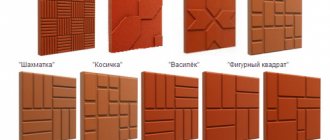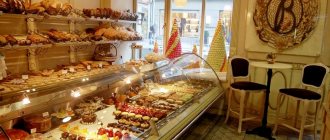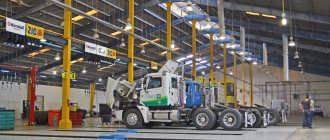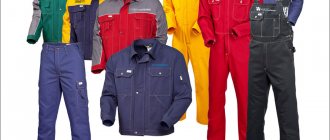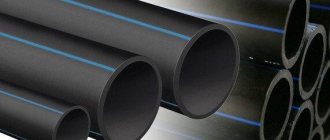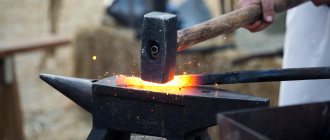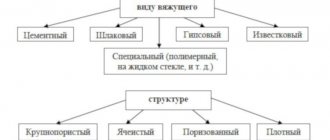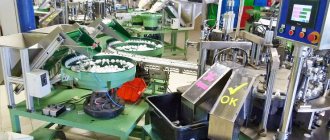The technological scheme includes the following stages:
- storage and preparation of raw materials for production;
- dough preparation;
- pressing dough;
- cutting of raw products;
- drying;
- cooling of dried products and their packaging.
A characteristic feature of modern pasta production technology is the widespread use of automated lines that combine all technological operations into a single complex, which ensures a high degree of mechanization and automation of production processes and makes it possible to obtain high-quality products. Depending on the type of products being manufactured and the installation of this or that equipment, a number of hardware and technological schemes are used to produce these products.
What about pasta?
Pasta products are divided into several classes.
1. By wheat varieties (groups).
- A: durum wheat of the highest, 1st and 2nd grades.
- B: soft wheat of the highest and 1st grades.
- B: wheat baking flour of 1st and 2nd grades. Considered soft.
2. By shape and size.
- Long (spaghetti, fusilli).
- Short (noodles, bows, cones, tubular pasta).
- For soups (noodles, stars).
- For baking.
- Curly.
Hard pasta is very popular. Unlike soft varieties, they do not boil in boiling water and are suitable for dietary nutrition.
A businessman needs to choose what goods he will produce - what form and price. Then choose a recipe and buy attachments for molding products.
A little about pasta
Today, the economic crisis continues in Russia. Demand for pasta has increased in almost all market segments. This change is due to the following factors:
- Pasta is a product that can be stored for a long time. It can be purchased for future use in anticipation of a worsening economic situation.
- Pasta is a relatively inexpensive product. The main ingredient is flour. Many domestic representatives of agriculture are engaged in the production of flour.
- Pasta does not rise in price as much as other products.
For entrepreneurs, there are 3 promising areas of business:
- work in the “economy” segment, which accounts for 30% of the market;
- work in the middle segment (this is the most popular group of goods among buyers, accounting for about 60–65% of products);
- work in the premium class (the smallest group, accounting for 5–9% of the market).
An undoubted advantage for businessmen is the relatively simple technology for producing pasta. Many entrepreneurs choose this industry also because the level of profitability is quite high, and the investment pays off faster than in many other production segments. Businessmen prefer to engage in pasta production as it is a stable industry. The demand for these products is not decreasing, but growing every year. In total, pasta accounts for 9% of the Russian diet in normal times. In moments of crisis, it is pasta that becomes a “strategic” product. People in difficult times choose them because:
- they have an affordable price;
- they are easy to prepare;
- they make an excellent and satisfying side dish.
Segmentation of the pasta market
4 categories of pasta products presented on the Russian market:
- Bottom. This includes products from group B economy class. Products are made from first and second grade flour. These products fill up to 30% of the market.
- Average. Pasta is made from soft wheat of group B (vitreous grain). Sold in packages weighing from 0.4 to 1 kg. The share of these products is about 20% of the market.
- Average-plus. They use durum grades of group A. These products are of high quality and reasonable price, they occupy a large share of the Russian market - more than 35%.
- Premium High-quality pasta from the highest grades of group A wheat. This share is mostly occupied by foreign companies, although there are also Russian manufacturers. Market share in the Russian Federation – no more than 15%.
Sales market
Based on the results of the examinations of the pricing policy of pasta products, the following conclusions suggest themselves:
- economy class pasta occupy a niche of 30%;
- pasta class “medium” and “medium plus” – 60-65%;
- Premium pasta takes up a small percentage of the market, as it has fairly high prices, but has beneficial properties and is of much higher quality than regular pasta.
Basically, such pasta is brought from abroad. Pasta can be purchased in grocery stores, catering establishments and other places.
Brief analysis of the industry and target audience
According to estimates for 2020, Russians eat up to 9 kg of pasta and pasta in 12 months. Consumers eat mainly domestic products - more than 96% of all goods on the market are made in the Russian Federation.
From year to year, the volume of pasta consumption in the country is growing. In 2020, the growth was 9.4% compared to 2016, the actual volume reached almost 1270 thousand tons. Not much is exported (about 2%). Most of it is consumed by the domestic buyer. The largest shares in the regional consumption structure are occupied by the Central and Volga Federal Districts.
According to forecasts, until 2025 the pasta market will continue to grow by at least 2% annually. The Russian economy is expected to overcome the crisis, which will also revive consumer demand.
Financial part
The initial costs of starting a business depend on the selected equipment, technology and the scale of the project as a whole. Let's consider approximate calculations for organizing a pasta production workshop.
- purchase of equipment (including delivery and installation) – 2,000,000 rubles;
- staff wage fund (per month) – 50,000 rubles;
- purchase of raw materials, packaging material – 70,000 rubles;
- rental payments (per month) – 20,000 rubles;
- utility bills - 10,000 rubles;
- transportation costs - 5000 rubles.
To start the project you will need from RUB 2,155,000.
The income portion of a business plan for the production of pasta is calculated based on the production of 4000 kilograms and 100% sales of products. The company produces products in the mid-price segment, the cost of a kilogram package is 60 rubles.
Gross revenue will be 240,000 rubles, net monthly profit will be 85,000 rubles. It will take 25 months to recoup the initial investment.
Download free business plan for the production of pasta (.rar file):
Example 1
Pasta production technology
Pasta production is carried out according to a standard technological scheme.
- The flour is sifted and heated. The dough is kneaded, at the same stage the remaining ingredients are added to the mass.
- The test mass is compacted using a screw press and blown (dried) by a fan.
- The dough is cut into shapes, which are laid out on a baking sheet.
- Pasta is processed in a drying oven, the humidity level is reduced to 20%. Afterwards the goods are additionally dried in cardboard packages up to 13%.
- The finished product is accepted by the technologist, after which the pasta is sent for packaging into a packaging machine.
Next, we will describe the main stages of production in more detail.
Preparing and sifting flour
At the first stage, the main ingredient is sifted and cleared of foreign bodies that could accidentally get into it. In addition to traditional sifting, magnetic cleaning is carried out. Magnets remove metal impurities from flour that appear there during its production and transportation.
Afterwards the batches of flour are mixed. The process uses raw materials of only one (selected) grade. Mixing allows you to achieve the required consistency of the raw material in relation to its moisture level. This helps prevent machine failures and ensure high product quality. It is recommended to mix batches of flour even at low air humidity in the warehouse.
Preparing and shaping the dough
Pasta dough is easy to prepare; it is the simplest type of dough. Production requires only flour and water. Egg powder and various dyes are used as additives. However, additives increase production costs; their use is economically feasible.
The dough is prepared in dough mixers. At first it has a crumb-like structure, then it is pressed using vacuum presses and turns into a homogeneous mass. As processing progresses, air bubbles are removed from it, the dough is dense and suitable for further cutting. At this stage, you can heat it moderately - then the dough will become plastic, convenient for cutting.
Cutting, packaging and storage
The finished dough is blown by a fan. It dries out and excess moisture comes out. It is cut into pasta according to the shape of the nozzles.
In the drying press, individual products are laid out, which are also dried and blown. Due to this, moisture is removed from them, reducing the risk of sticking together in the package. After this, the pasta is dried for a long time on conveyor dryers.
The drying process must be organized correctly, since if the technology is violated, the workpieces may deteriorate. If the drying is too strong, the pasta will crack and become deformed; if it is dried for too long, it will sour.
Before packaging, the finished product is kept for about 5 hours in cardboard boxes, then packed, sent for storage, and then for sale.
Cutting raw pasta
Cutting raw pasta is carried out immediately after pressing. Its purpose is to prepare products for drying.
Cutting raw pasta consists of blowing, cutting and laying out in order to prepare the semi-finished product for the most time-consuming and labor-intensive stage of production - drying. The duration of drying and the quality of the finished products depend on the correct cutting.
For quick drying, raw products are blown with air taken from the workshop premises. At the same time, the moisture content of the products decreases by 2-3%, as a result, the plasticity of the semi-finished product decreases, elasticity increases, and a crust forms on the surface, which prevents the products from sticking and bending.
The purpose of cutting is to obtain a product of a certain length. Short-cut products are cut in two ways. In the first case, the knife slides along the surface of the matrix or cuts a hanging strand at some distance from the matrix; in the second case, cutting is carried out after the products have dried a little.
Raw products are supplied to the dryers via inclined slopes or pneumatic transport. The use of pneumatic transport allows the product to be slightly dried, which reduces the drying time.
To lay out raw short-cut products, mechanical spreaders (rasters) are used, the pipe or conveyor of which makes an oscillating movement over the moving dryer belt, distributing the product on it in an even layer 2-5 cm thick, depending on the type of product.
Cutting and laying out pasta depends on the drying method: cassette (in cassettes) or hanging (on bastuns). In the first case, cassettes made of plywood, wooden planks and duralumin are used. The cassette is a box that has only two side walls, between which the pasta is placed so that drying air passes through them along the tubes. Bastun is a hollow aluminum tube 2000 mm long with pins at the ends, with the help of which it rests on the conveyor chains. A strand of pasta is hung on the bastun.
During cassette drying, pressed products that have reached a length of 1.5-2 m are mechanically picked up, placed on cassettes and cut by a spreading-cutting mechanism into pieces 250 mm long.
Cutting pasta for hanging drying is carried out by self-weighing, which is part of an automated line. Empty bastuns move horizontally with some breaks. At the moment they stop, the rows of molded products, passing the blower, reach the required length, falling below the bastun, which is at rest. When moving forward, the bastun pulls back the pasta strand, and it bends around him on one side. Then two hollow cylinders transfer the upper half to the other side of the bastun. The knives cut off a strand of pasta, and due to its own weight it falls and hangs on the bastun. The lower knives trim the ends of the products. The scraps fall into the auger located below, are crushed and then fed by a pneumatic conveyor into the dough mixer for recycling.
Initial capital
When purchasing Russian equipment, you can save significantly. The business plan takes into account the semi-automatic line “Makiz-02-100”. The cost of 1 ton of durum flour is approximately 30 thousand rubles. Purchasing raw materials will prove to be one of the largest monthly expenses.
Table 1. Initial costs for a pasta business.
| Expense item | Cost, rub. |
| Registration, certification | 30 thousand |
| Premises for rent, 200 sq. m | 100 thousand |
| Equipment | 450 thousand |
| Raw materials (per month) | 530 thousand |
| Salary, 7 people. | 200 thousand |
| Additional expenses | 150 thousand |
| Total | 1.46 million |
The calculations are relevant for a city with a population of up to 1 million people. Additional costs include utility bills, advertising, and cosmetic repairs.
Marketing and advertising
A well-thought-out marketing plan will quickly gain consumer trust. Basic techniques for running a successful pasta business:
- Setting an adequate price for the product. It should be higher than the cost of production and lower than that of competitors. In the future, when production volumes increase, the price can be gradually increased. A sharp increase in the cost of finished products is unacceptable. The optimal value is 5-7%, for 1.5-2 months.
- The use of psychological techniques in determining the cost of pasta. Buyers are more willing to buy goods if the price tag indicates a non-rounded amount, for example, not 50 rubles, but 49.99.
- During the first quarter of the enterprise’s operation, it is recommended to use production capacity at 60-70% to avoid product storage in the warehouse.
- At the initial stage, the production workshop must create a decent assortment of pasta products - 12-15 items. Offering a rare item, such as lasagna sheets, would be a plus.
- Concluding agreements with large food warehouses will play into the hands of the mini-factory.
Problems with the sale of products will definitely arise, you need to be prepared for this. Wholesale buyers are afraid to purchase large quantities of unknown brands of pasta. To solve this problem, it may be worth organizing your own dealer network. Another way to conquer the market is to sell goods for sale.
Attention! Any methods of promoting products will be ineffective if their quality is low.
An advertising campaign will help attract the attention of consumers to a new product on the market. Don’t neglect advertising on billboards and creating videos. These methods work, although they require significant investment. Another way to advertise your products is through promotions. Buyers are willing to buy goods at a reduced price on supermarket shelves; they like to pay for 2 packs of pasta and receive 3.
Documentation
To register pasta production as an organization, you need to select an organizational and legal form: individual entrepreneur or LLC (legal entity). The first option is suitable for a businessman who does not plan to sell his goods in large wholesale and retail companies. The second will make it possible to create a large sales network and increase the plant’s production performance.
When registering, indicate OKVED code 15.85 “Production of pasta”.
To make food products you will need to obtain:
- SES permission;
- permits from local administration, fire and environmental services;
- GOST certificate of conformity.
Samples of the finished product must be sent for testing and must comply with GOST R 52378-2005 “Instant pasta products. General technical conditions". After receiving a positive verdict and certificate, you can begin production.
Watch the video about the production of pasta:
Organizational aspects of business
Let's consider preliminary actions before the start of the organization's work. Perhaps the best solution would be to hire a lawyer to handle all the paperwork. This will save your own time, speed up the process and avoid unnecessary mistakes.
Preparation of legal documents
The company is registered in one of the popular formats: individual entrepreneur or LLC. With a small scale of production, it is more profitable and easier to register a business; it has a number of advantages:
low cost of registration in a short time,
reduced tax rate.
IMPORTANT. The application indicates the product release code, 15.85 according to GOST.
Permits from the SES, State Fire Supervision and State Environmental Service will be required. The company is registered with the tax office, local authorities, pension fund and statistical office.
Finding suitable buildings for the company
The following objects are being prepared for placement:
Pasta production line. The recommended ceiling height is up to 3.5 meters, the area is about 250 sq.m. The parameters should ensure safety and ease of operation, and the ability to check product quality.
The warehouse is selected in accordance with production volumes, approximate dimensions 100 sq. m. It must provide storage devices and additional space where spare production equipment will be stored. It is necessary to provide ventilation and install equipment that purifies the air from excess moisture.
Office, staff rooms, bathroom. There are no strict requirements for them, other than ensuring normal conditions for stay and rest.
Selecting raw materials
Pasta contains two elements: flour and liquid. There are several nuances to this issue.
In production, flour from durum wheat grains is used. Other types can be used: buckwheat, rice, beans, but they can significantly increase the cost of products. There are imported and Russian brands, and domestic ones are lower in cost.
The following requirements apply to their indicators:
- High moisture absorption parameter,
- Whiteness index above 49,
- Gluten percentage within 26,
- Humidity below 16%.
- The second component, water, must be potable or undergo appropriate purification.
Purchase of raw materials
A convenient and easy way is via the Internet. These can be trading platforms, websites of manufacturers or intermediary companies, for example, agroserver.ru, altaikrupa.rf, etc.
The choice of company depends on the scale of production. The manufacturer usually sells large quantities, intermediaries sell in any volume. The last option is more profitable for small companies. You can agree on the delivery of raw materials to the production warehouse using the supplier’s transport.
Staff
Production efficiency depends not least on employees. The company will need:
- Line maintenance personnel (2 people for automation) – 20,000 rubles each,
- Technologist – 30,000 rubles,
- Loader driver – 25,000 rubles,
- Manager 25,000 rub.
Total: 100,000 rubles monthly.
ON A NOTE. To reduce costs, a business owner can take on the responsibilities of an accountant or assign them to a manager. It is advisable to hire a driver with his own transport to remove this expense item, since your own truck will require a parking space, payment for repair work, etc.
Room
The area of the mini-factory will be about 200 square meters. m. On this territory it is necessary to place a production workshop with equipment installed in it, warehouses for storing raw materials and finished products (they will occupy about half of the total area). Premises for staff (for rest and changing clothes), an administrative office, and a bathroom must also be prepared.
In the work shop, the ceiling height will be at least 2.5 m. In production and warehouses, it is necessary to create a dry and warm microclimate, equip a good ventilation and heating system. Warehouses must be equipped with racks for storing equipment.
Production can be localized in a populated area, perhaps on the outskirts, where rent will be cheaper. It is important that there is convenient transport access to the plant.
Stabilization, cooling, packaging and storage of pasta
The pasta leaving the dryer has a temperature approximately equal to the temperature of the drying air. Before packaging, the product must be slowly cooled to the temperature of the packaging compartment for at least 4 hours by washing with air with a relative humidity of 60-65% and a temperature of 25-30 ºC. In this case, the products are stabilized: the humidity is finally equalized throughout the entire thickness of the product, the internal shear stresses that could remain after intensive drying of the products are resolved, and some weight reduction occurs due to the evaporation of 0.5-1% of moisture.
In production lines, stabilization and cooling of products is carried out in storage stabilizers, where a 12-hour supply of dried products is simultaneously created. In other cases, vibration coolers are used.
The packaging process consists of feeding products onto packing tables or bins; sorting, checking them on magnetic separators; packaging, including compaction on the vibrator; weighing; clogging the cap and markings.
Pasta products are produced in packaged and packaged form. Packaging, i.e. packaging in consumer (small) containers is carried out using automatic machines or manually. Consumer packaging includes boxes made of cardboard or thick paper, bags made of polyethylene film or heat-sealing cellophane, and outer packaging includes boxes made of corrugated or molded cardboard, plywood and board boxes and four-layer kraft paper bags.
Pasta should be stored in warehouses on racks or pallets at a temperature of 16-18 ºС and a relative air humidity of no more than 70%. These premises must be clean, dry, protected from exposure to precipitation, and not infested with barn pests. Products should not be stored with goods that have a specific odor, as they may absorb this odor.
Shelf life of pasta from the date of production, (months):
- with wheat germ – 3;
- dairy and soy - 5;
- egg and tomato – 12;
- gluten, carrot, spinach and without additional raw materials – 24.
Raw materials
Making pasta requires flour and water. It is better to choose durum wheat as raw materials. The difference in the wholesale price between soft and hard varieties is small, but the quality of durum flour and pasta is noticeably higher. In this case, it will be easier to take a share of the market and get your buyer.
It is the cost of flour that is the basis of the cost of finished products. Therefore, it is best to negotiate supplies directly with flour milling companies. For uninterrupted production, you need to create a large supply of raw materials and enter into a supply agreement.
To produce 1 ton of pasta without additives, you will need 909 kg of flour - that is, the calculation is approximately one to one.
Business Description
Making pasta is a great idea. With a competent approach to organizing activities, an entrepreneur will be able to gain profit within a year. In the future, the company's monthly profit will exceed 350,000 rubles.
The main mission of a factory or production workshop is to satisfy the market need for quality pasta. Different types of pasta are in demand among buyers:
- straw;
- spaghetti;
- noodles;
- horns;
- spirals;
- feather;
- soup filling in the shape of stars and flowers.
To make all of the listed types of products, you will have to acquire different attachments that give the desired shape to the pasta, while the composition of the products remains unchanged. It includes:
- flour;
- egg yolk;
- dyes;
- water.
Attention! To conquer the sales market, there is no point in producing cheap products. The difference between the cost of flour from durum and soft wheat varieties does not exceed 5%, but consumers prefer pasta made from high-quality raw materials.
It makes no sense for a start-up pasta company to develop and promote its own brand. This will require a lot of funds. Ultimately, expensive luxury pasta is no different from ordinary pasta in its composition; the consumer overpays for beautiful packaging and branding.
Staff
The following personnel will be required to operate the enterprise:
- cook-technologist, 1 person;
- workers, 2 people;
- auxiliary workers, 2 people;
- sales manager, 1 person;
- driver, 1 person
An accountant is also needed. At the initial stages of work, he can be hired part-time or outsourced. It is recommended to hire a driver with your own car.
Sales issues and agreements are dealt with by a sales manager who has the skills necessary for effective work.
Workers can be hired without experience and trained along the way, but it is better to hire a chef-technologist with qualifications and experience in the food industry. The technologist will be the senior person in the workshop.
Financial calculations
Production requires significant investments. But with careful calculation they can be optimized.
Starting capital and monthly expenses
Most of the start-up investment will go towards purchasing equipment. The line costs about 500,000 rubles; additional equipment will require another 200,000.
In addition, you need to provide for the following expenses (in rubles):
- raw material stock (2 tons of flour) – from 60,000;
- packaging costs – 5,000;
- for paperwork, accounting, cash desk – 100,000;
- spending on advertising and website – 20,000.
Every month you need to replenish the raw material supply, and also spend 20,000 on salaries for operators, 15,000 on rent and utilities, 10,000 on transport. Total - 105,000.
To get the amount of initial investment, you need to add salary, rent, utility and transportation costs to the starting expenses. Total - 930,000 rubles.
How much can you earn and payback period
If you have found your niche, the investment will pay off quickly. High-quality elite pasta sells for no less than 70 rubles per half-kilogram pack.
If you produce and sell 2,500 kg per month, then ideally you will earn 175,000 rubles.
Profit excluding taxes will be 70,000 rubles. It will be possible to fully recoup the investment in 14 months.
Equipment for the production of pasta
Making pasta requires the following equipment:
- Apparatus for sifting flour.
- Dough mixer.
- Screw press.
- Drying cabinet.
- Packing machine.
There are semi-automatic and automatic lines on sale.
You can buy machines made in Russia or abroad. Russian equipment can produce goods no worse than imported ones, but the cost of equipment is an order of magnitude lower. The advantage of foreign analogues is that they can be equipped with a large number of attachments. But for Russian equipment, purchasing components will not be a problem.
The productivity of our semi-automatic line is 100 kg/h, which is just suitable for a mini workshop.
What is required for implementation
Pasta is a “figurine” made from dried dough containing wheat flour and water. They can be formed in the form of tubes, ribbons, strings, etc. In addition to the main raw material, various additives based on chicken eggs and milk are used to improve taste.
To make pasta you will need special equipment. You can buy either a semi-automatic line with a productivity of approximately 100 kg/hour, or an automatic one with a productivity of 200 kg/hour.
The device includes:
- flour sifter;
- press and dies for it;
- drying device.
We also need packaging equipment.
Important : before packaging, products need to lie in cardboard boxes in a dry room for at least 4 hours. Additionally, we need racks for dies and finished products, carts for moving raw materials, preferably an apparatus for sharpening die knives and a sink.
The premises of the pasta workshop must comply with sanitary and fire safety standards. To save money, you can rent it on the outskirts of the city. At light loads, two operators will be required to service the line.
Sales channels
To increase sales and improve brand reputation, it is necessary to create a large distribution network. Possible distribution channels for pasta:
- retail stores, retail chains;
- wholesale centers;
- catering organizations;
- municipal institutions.
You should attract the attention of consumers in stores with promotions and BTL campaigns, in which promoters describe the advantages of the company’s products and offer a new product with a discount or other bonuses. At catering outlets, you can place POS materials and attractive posters depicting the product. Distributing flyers near grocery stores is also effective.
If you have a solid budget, you can order pasta advertising on TV channels.
Benefits of starting your own pasta business
- Consistently high consumer demand. In the diet of residents of the post-Soviet space, pasta accounts for as much as 9%. And according to social research, more than 40% of Russian residents eat pasta 2-3 times a week. For comparison, 34% of consumers eat pasta once a week, and only 12% of consumers eat pasta once every two weeks.
- Fast return on investment. The payback period for a pasta business, if properly planned, can be only 12-18 months.
- Long shelf life of products. Pasta is a non-perishable product and, under the right conditions, can be stored for up to 24 months. This eliminates the possibility of financial losses due to natural spoilage of products and increases the chances of 100% sales of finished products.
- The ability to constantly change and expand the range. Based on analyzes of the first months of the enterprise’s operation, it is possible to understand what types of pasta products should be focused on in the future. Perhaps these will be healthy products made from durum wheat, perhaps spaghetti or horns, which are so popular among customers. Or maybe such a rather rare product as lasagna sheets or cannelloni.
Images 5,6. Creative packaging of pasta
